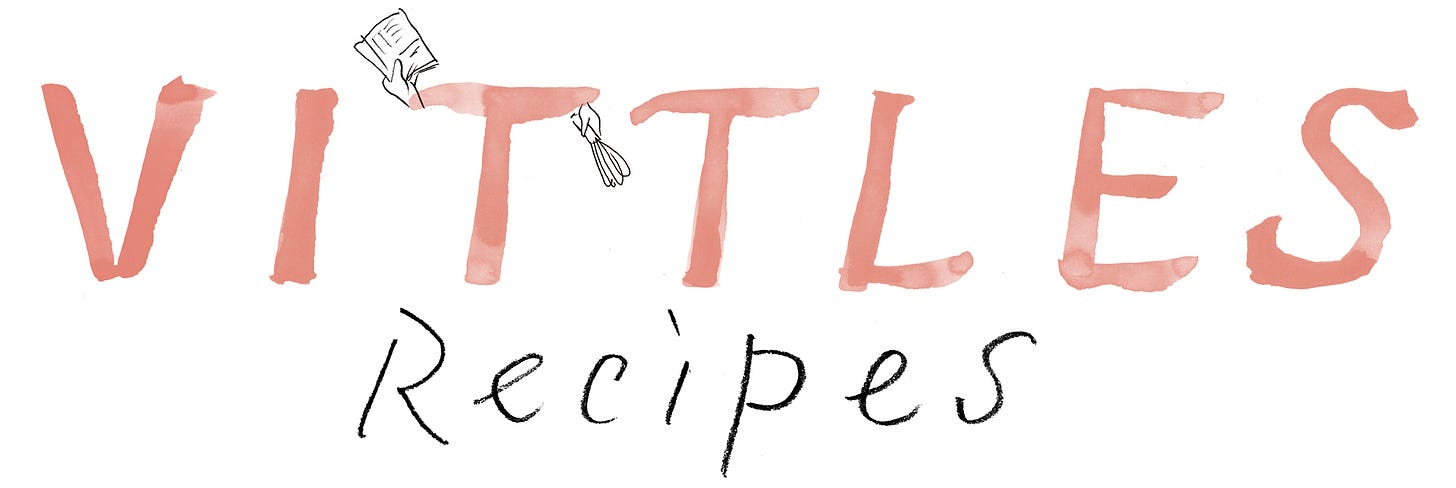Melek Erdal’s ‘Easiest Börek’
How a bragging contest between diaspora aunties led to the easiest recipe for concertina börek. Words and photos by Melek Erdal.
Welcome to Vittles Recipes! In this weekly slot, our roster of five rotating columnists share their recipes and wisdom with you. This week’s columnist is Melek Erdal.
If you’ve been enjoying the writing then please consider subscribing to keep it running. Subscribing will give you access to the whole Vittles back catalogue – including Vittles Restaurants, Vittles Columns, and our archive of cookery writing. A Vittles subscription costs £5/month or £45/year.
Melek Erdal’s ‘Easiest Börek’
In her new column, ‘Conversations and Chance Encounters’, Melek Erdal recounts how a bragging contest between diaspora aunties led to her recipe for concertina börek.
What is the significance of a conversation about recipes? If so-called ‘great adventures’ consist of going to music festivals or trekking across the Himalayas, how valuable is an encounter with an older lady in a cobalt blue jacket at a grocery store, who shares her recipe for purslane? Or a Sunday spent with uncle Hasan, unearthing the potato harvest in his North London allotment? Such chance meetings might lack grandeur maybe, but they can still feed you for your whole life.
The genesis of this particular recipe was a series of conversations with aunties with competing claims to have the easiest method for making baklava. There is no group of people more expert in the art of easy and impressive cooking than the collective known as the ‘diaspora aunties’ – women who might now live in urban centres across Europe, but hold on tightly to the traditions and practices of their roots like a badge of honour, an allegiance to a way of life that is simple but vast and embedded deep. From purpose-built saj stations for making lavash in their garden sheds, to self-tailored gözleme aprons that tie underneath the armpits, not around the waist, to salça-making collectives and whatsapp groups, there is no end to how creative, lively, and ingenious the networks of the diaspora aunties are.
What’s also deeply embedded is the aunties’ need to compete among themselves in terms of how tightly they have held on to old ways of life, how much wisdom from the motherland they have preserved. A few years ago, I shared an ‘easy baklava’ recipe on my Instagram. It started a chain reaction of aunties messaging me claiming to know an ‘easier’ and ‘more elite’ baklava recipe. I spent a glorious summer going from aunty to aunty, learning their tricks and skills. I visited aunty Zekiye first, who showed me her method for ‘tembel avrat’ (lazy wife) baklava, which involved creating layers by rolling filo around an oklava (a very thin rolling pin), then scrunching the roll up and sliding it off the oklava onto a tray.
When I shared that recipe on Instagram, it was as if I had sparked a fire among aunties across North London. The messages started rolling in from other women, inviting me to visit so they could show me a ‘better’ recipe. I was merely a platform for passing on shade and challenges as they volleyed with each other across the internet. ‘She wouldn’t know a good baklava, I know her village, they’re all show’, one anonymous aunty messaged. ‘Looks burnt, she’s using the wrong butter’, another wrote.
I reached the peak of my baklava chronicles when I received a message from neighbours of aunty Nuray. ‘She doesn’t want to be filmed,’ I was told, but I was assured that her ‘çarşaf baklava’ was famous on the street and would blow any other out of the park. I went to visit her the next day and she shared with me her concertina-style baklava, which she says she invented herself.
Without any need for tools, aunty Nuray created instant layers with just one sheet of filo at a time, sprinkling the sheets with nuts and scrunching them up like an accordion. It was genius. The result was light and delicate, words not usually used to describe baklava. As I filmed her hands while she narrated, aunty Nuray’s reluctance to appear on camera disappeared. Her fantastically simple technique gave us the space to have fun and connect with each other. We sang while crushing nuts and prepping the four elements required to make the dish. To this day, I stand by the claim that aunty Nuray and I started the viral sensation that ‘crinkle phyllo’ became.
And so, channelling the spirit of my diaspora aunties, I have developed a dish that I dare say is both easy and impressive. A börek is a similar challenge to baklava in that it usually requires layering filo pastry vertically. But using the concertina method instead means that the layers are horizontal, which means a larger surface area exposed directly to heat, resulting in a crunchier and lighter börek. The pour here is not a baklava syrup but a börek liquor. I’ve kept in walnuts as a nod to the original and have added in feta. Inspired by the bonds I built making baklava with these diaspora women, I wanted to develop a dish to be made with company – something to do with your hands that makes conversation flow better. It’s as easy as crumbling feta, crushing nuts, tearing herbs into a bowl, sprinkling filo sheets with these fillings and some melted butter, scrunching them up, concertina-ing the spaces between them, and watching as the börek bakes.
Concertina Börek
Serves 4 (as a main) or 8 (as a snack or starter)
Time around 1 hr, depending on how leisurely you are
This is a great lunchtime snack with a cup of sweet black tea. It also works well as a starter drizzled with honey, or as a main dish served with wedges of crunchy lettuce and garlic yoghurt.





